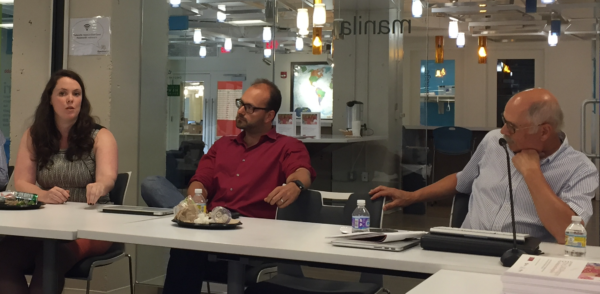
The Partnership for Transparency Fund (PTF) hosted a seminar on June 23, 2016 with Citizen Action for Results, Transparency and Accountability (CARTA) Program Director, Tjaarda Storm van Leeuwen, highlighting the achievements and lessons learned from the pilot program implemented in Nepal and Bangladesh from 2011-2015.
“What made the CARTA Program unique is it was the first time Governments and the World Bank agreed to have truly independent third party monitoring in their projects,” explained Tjaarda. “We had an independent source of financing and the CSOs on the ground were not selected by the World Bank.”
The CARTA program supported a total 11 World Bank-financed projects—6 in Nepal and 5 in Bangladesh—with 12 sub-projects lasting from one to two years. Each sub-project was a unique pilot for local CSOs to independently test citizen engagement strategies in a variety of sectors.
The sub-projects also went far beyond basic M&E by building the capacity of CSOs to encourage greater citizen participation and work constructively with authorities. “Many of the communities did not know how to communicate and bring their issues of concern to government officials, but through CARTA, they learned how to formulate their demands much more constructively – they knew to whom to go to, how to present their grievances or demands – and we saw evidence a major increase of citizen participation in that process,” said Tjaarda, “even the government officials started to appreciate the citizen involvement through the CARTA Program because their projects were implemented much better and reached the intended beneficiaries.”
Questions were raised by the audience as to why citizen engagement programs, like CARTA, are still looked at skeptically even though they have proven successful in increasing the impact of donor programs. Tjaarda Storm van Leeuwen remarked that while CARTA was being designed, it was thought to be a project that was ahead of its game.

